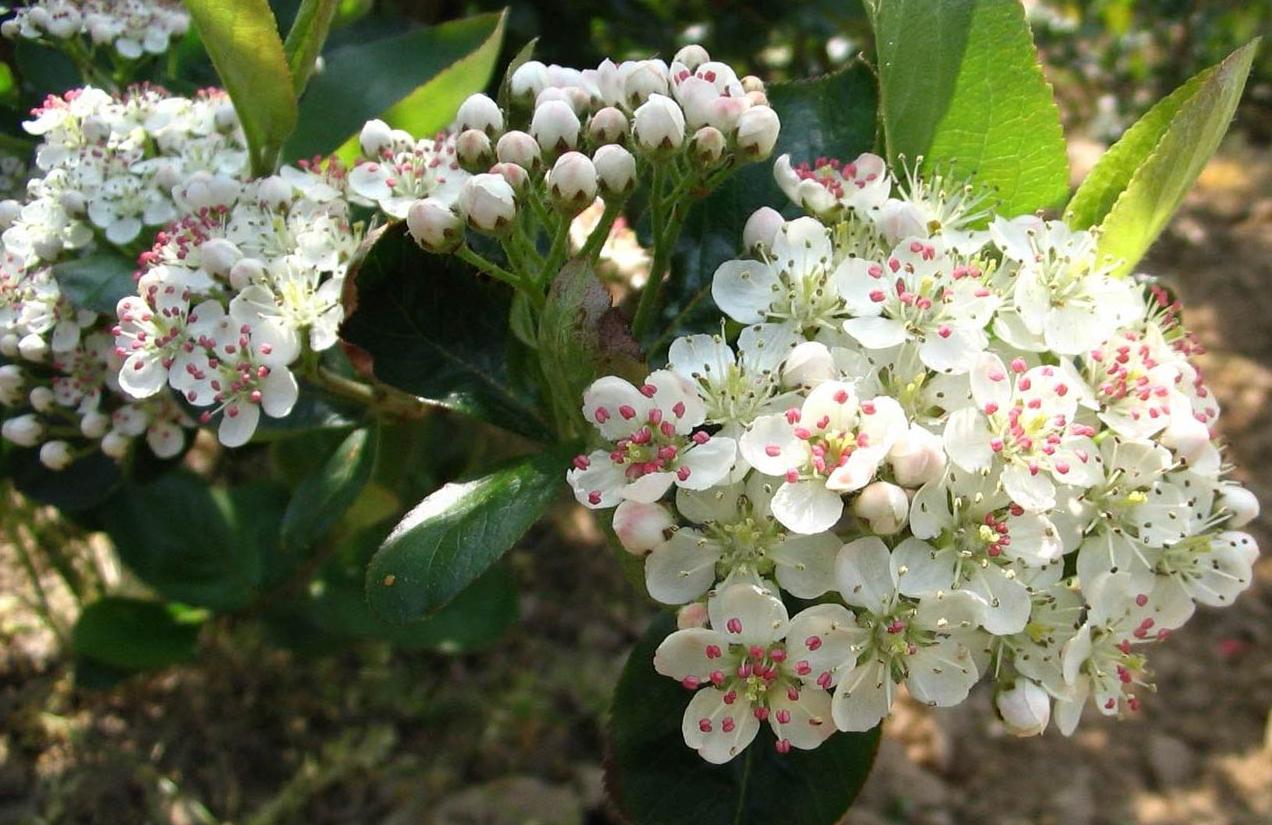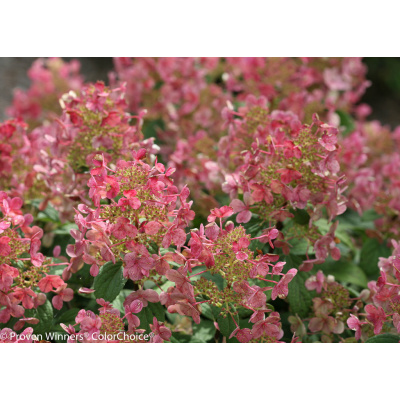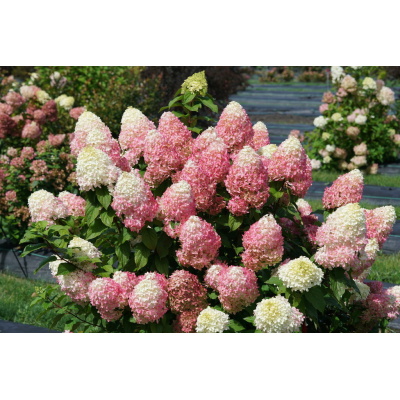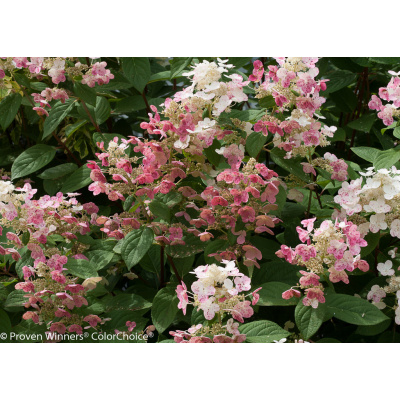Description
 Common Name: black chokeberry
Common Name: black chokeberryCulture
Easily grown in average, medium moisture, well-drained soils in full sun to part shade. Plants have a wide range of soil tolerance including boggy soils. Best fruit production usually occurs in full sun. Remove root suckers to prevent colonial spread unless desired.
Noteworthy Characteristics
Aronia melanocarpa, commonly called black chokeberry, is an open, upright, spreading, somewhat rounded but leggy, suckering, deciduous shrub that typically grows 3-6’ tall. It is native to low woods, swamps, bogs and moist thickets but occasionally to dry upland areas, from Newfoundland to southern Ontario and Minnesota south to Missouri, Tennessee and Georgia. It is noted for its 5-6 flowered clusters of white 5-petaled spring (May) flowers, glossy elliptic to obovate dark green leaves (to 2-3” long) with finely toothed margins, black autumn berries (blueberry size) and purple/red fall color.
Genus name comes from the Greek word aria the name for a species of Sorbus of which the fruits resemble chokeberry.
Specific epithet comes from the words melano meaning “black” and carpa meaning “fruit” in reference to the color of ripe fruits of this species.
The common name of chokeberry is in reference to the tart and bitter taste of the fruits which are edible but so astringent as to cause choking in most of those who try. Fruits are sometimes used to make tasty jams and jellies.
‘Viking’ is an upright, multi-stemmed deciduous shrub that was developed in Europe as an orchard plant. It has glossy elliptic to obovate dark green leaves (to 2-3” long) with finely toothed margins. The leaves turn an attractive red in fall. In spring, slightly earlier than the species, it has 5 to 6-flowered clusters of white 5-petaled, fragrant flowers that mature into purplish black edible berries that ripen in late summer. The berries are high in nutrients and can be used for juice, pies and jellies or to provide food for birds and other wildlife. ‘Viking’ grows 3 to 6 ft. tall and wide.




Reviews
There are no reviews yet.